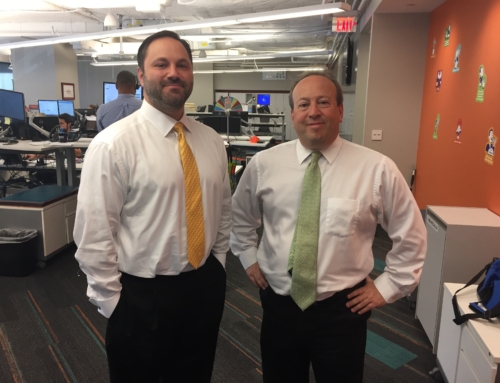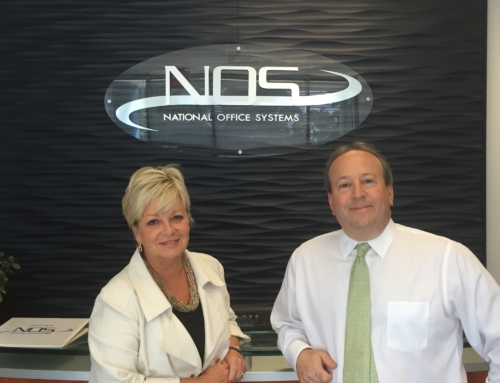It is the core ingredient of aspiration and achievement. It sustains you, the tougher things get. And it is what fuels an individual, team or organization to endure, prevail, and win.
Scratch the surface of any successful achievement, and you will find GRIT.
Workshop attendees at a recent program of the Institute for Excellence in Sales (IES) explored the full meaning of the word when Andy Miller led a session on applying GRIT to sales, business, and life itself. Miller, CEO of Big Swift Kick, a firm that helps small and mid-sized companies with marketing strategy, defined GRIT as getting it done, no matter what. It is your capacity to dig deep, do whatever it takes – even suffer, struggle, and sacrifice – to achieve your most worthy goals.
Miller shared the approach and findings from a new book, “GRITTM – The New Science of What It Takes to Persevere, Flourish, Succeed,” by Paul G. Stoltz, PhD. As Miller engaged with the audience of IES&BD members and sales professionals, he asked “What are we doing to grow our GRIT?”
There was mutual agreement that the sales world today is more competitive and unpredictable than ever. Clients come to the sales process having done their own research and knowing more, thus sales professionals need to be better equipped to meet numerous challenges. Therefore, it is important to upgrade from generic grit (1.0) to GRIT (2.0), and learn a process for permanent improvement, he said.
Miller cited studies conducted by Harvard, MIT, Yale and others that found grit to be the number one predictor of success. He noted the work of research psychologist Dr. Angela Duckworth, who has conducted groundbreaking studies on the relationship between grit and achievement and, in particular, the role of GRIT in education.
In one study, Duckworth tested freshman cadets at the West Point Military Academy to determine how well grit would predict who would survive a grueling summer training program. Of all the variables measured, grit was the best predictor of which cadets survived. Echoes of those findings appear in studies of a broad context of groups including first-year teachers in tough schools, sales professionals, and children who have won the National Spelling Bee.
Miller explained that GRIT 2.0 is made up of four dimensions:
Growth – your propensity to seek and consider new ideas and different approaches
Resilience – your capacity to respond constructively to adversity
Instinct – your gut-level capacity to pursue the right goals in the smartest ways
Tenacity – the degree to which you persist and stick with whatever you choose to achieve.
Oprah Winfrey, Richard Branson, FedEx Chairman Fred Smith, and Steve Jobs all represent examples of using a constant infusion of GRIT in pursuit of their goals, Miller said.
But the first step in demonstrating strong GRIT starts with the alignment between your motivation – your Why – and your effort, or what Miller called “Why vs. Try.”
Before setting goals, Miller suggested asking yourself “How strong is my Why on this goal?” In other words, how compelled are you to relentlessly pursue this goal? Then ask “How strong is my Try?” How much effort and energy are you pouring into this goal?” For an individual, team or organization to sustain GRIT, the WhyTryTM has to be in sync and aligned.
Miller sought answers from the audience on their own GRIT stories. Some offered stories of entrepreneurs who transformed purpose into profit. Miller shared one of his own. When he was a 14 year-old teenager in the early 1970’s, he and his friends decided they wanted to travel cross-country on their bikes. Knowing the opposition they would have from their parents, they strategized how to make it happen.
Over the course of a year they took shorter trips to engender parental trust, made a list of objections and role played how to address each objecting parent, acquired maps, and learned how to respond to a medical emergency, among other tactics. Their parents finally agreed. Through GRIT, he and his friends experienced a life-changing event.
GRIT has aspects of quality and robustness as well, Miller said. People with bad GRIT sometimes hurt others. Good GRIT often means doing something for yourself in a way that benefits others. Robustness is how well you hold up – the degree to which you are worn down or become stronger over time.
Noting the statistic that only 50 percent of sales professionals meet their quota, Miller laid out three broad categories describing how sales professionals respond to sales challenges. Sales Climbers embrace discomfort, seek challenge, and forge a way. Failure is not an option. Sales Campers find change to be difficult. They seek stability, status quo, and hide during the storm. Lastly, Sales Quitters are whiners and full of excuses. They turn one speed bump into a road disaster, he said.
So how does an individual, team or organization gauge and increase GRIT? What does it take to dig deep and develop Growth, Resilience, Instinct and Tenacity and fulfill a bold aspiration?
- Pick a GRITTY goal, one that stretches you. Be sure to ask “Is it tough enough? Will it test us?”
- Apply the “WhyTry” test.
- Develop a GRITTY game plan. The plan answers several questions such as “How would the grittiest person I know approach this goal?” What resources/people do I seek to determine the smartest path to fulfilling this goal?” What obstacles are we likely to confront as we go forward?”
- Find a GRIT Team Coach who is committed to bringing out your gritty best.
- Read about GRITTY people and seek out those accomplishing anything impressive, and determine what role GRIT played in their story.
Stoltz says in his book that GRIT matters. It is the oxygen of achievement. It’s not some rare quality reserved for epic heroes but the required fuel of everyday endeavors. “GRIT isn’t the nice-to-have item on the get-the most-out of life list. It’s the single most essential item on the list.”
In fact, he continues, you could easily argue it IS the list because you can’t enable anything on the list without GRIT. There is no going far without it.
This article was written by Diana Berardocco.






